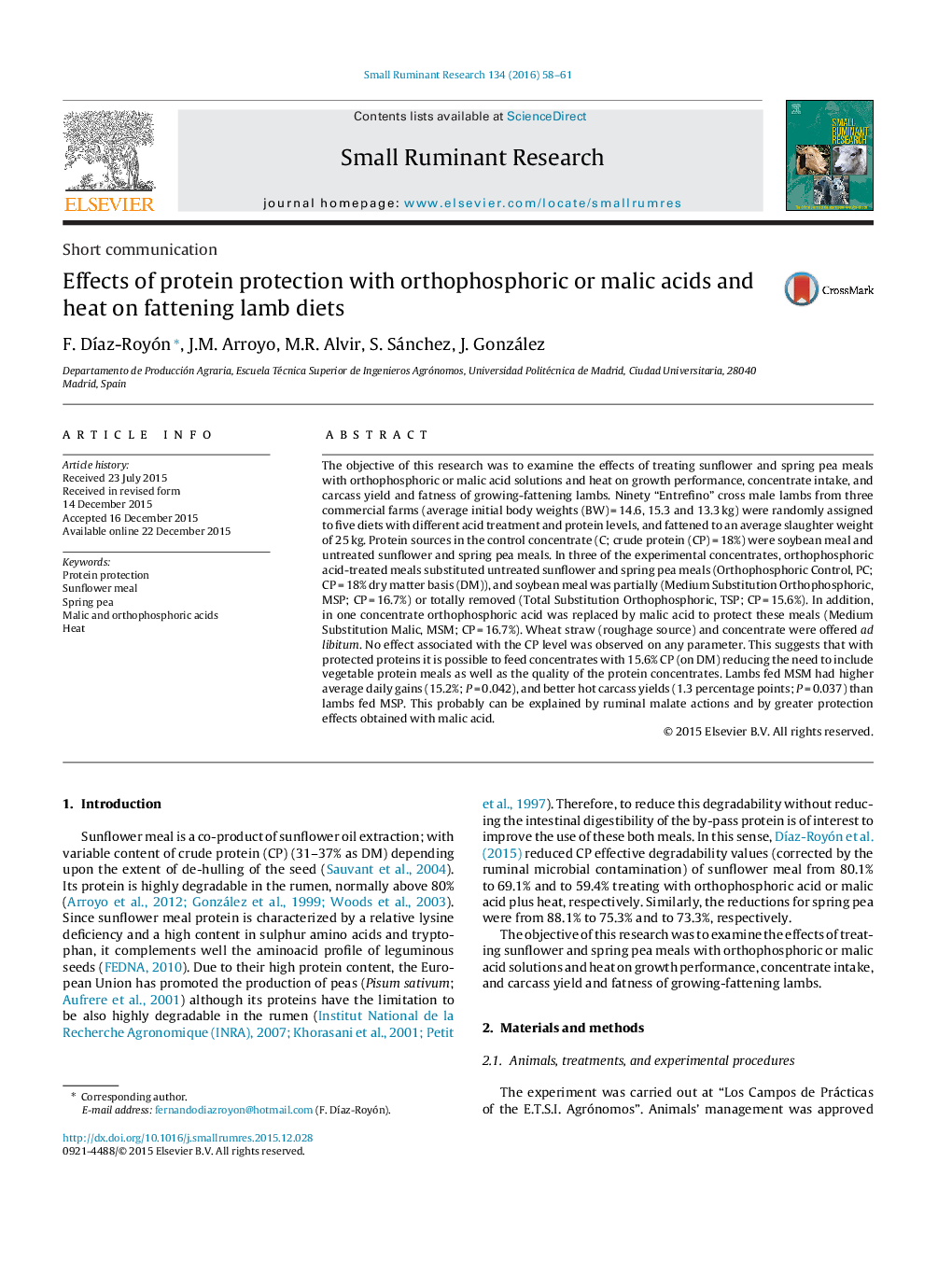| کد مقاله | کد نشریه | سال انتشار | مقاله انگلیسی | نسخه تمام متن |
|---|---|---|---|---|
| 2456880 | 1554358 | 2016 | 4 صفحه PDF | دانلود رایگان |
• We investigated the use of protected protein concentrates in fattening lambs slaughtered at 25 kg.
• Sunflower and pea meals treated with orthophosphoric acid and heat could completely replace soybean meal.
• These treated meals allow to reduce down to 15.6% (on DM) the crude protein content of concentrate.
• Malic acid treated meals yielded a faster growth than orthophosphoric acid treated meals.
The objective of this research was to examine the effects of treating sunflower and spring pea meals with orthophosphoric or malic acid solutions and heat on growth performance, concentrate intake, and carcass yield and fatness of growing-fattening lambs. Ninety “Entrefino” cross male lambs from three commercial farms (average initial body weights (BW) = 14.6, 15.3 and 13.3 kg) were randomly assigned to five diets with different acid treatment and protein levels, and fattened to an average slaughter weight of 25 kg. Protein sources in the control concentrate (C; crude protein (CP) = 18%) were soybean meal and untreated sunflower and spring pea meals. In three of the experimental concentrates, orthophosphoric acid-treated meals substituted untreated sunflower and spring pea meals (Orthophosphoric Control, PC; CP = 18% dry matter basis (DM)), and soybean meal was partially (Medium Substitution Orthophosphoric, MSP; CP = 16.7%) or totally removed (Total Substitution Orthophosphoric, TSP; CP = 15.6%). In addition, in one concentrate orthophosphoric acid was replaced by malic acid to protect these meals (Medium Substitution Malic, MSM; CP = 16.7%). Wheat straw (roughage source) and concentrate were offered ad libitum. No effect associated with the CP level was observed on any parameter. This suggests that with protected proteins it is possible to feed concentrates with 15.6% CP (on DM) reducing the need to include vegetable protein meals as well as the quality of the protein concentrates. Lambs fed MSM had higher average daily gains (15.2%; P = 0.042), and better hot carcass yields (1.3 percentage points; P = 0.037) than lambs fed MSP. This probably can be explained by ruminal malate actions and by greater protection effects obtained with malic acid.
Journal: Small Ruminant Research - Volume 134, January 2016, Pages 58–61
